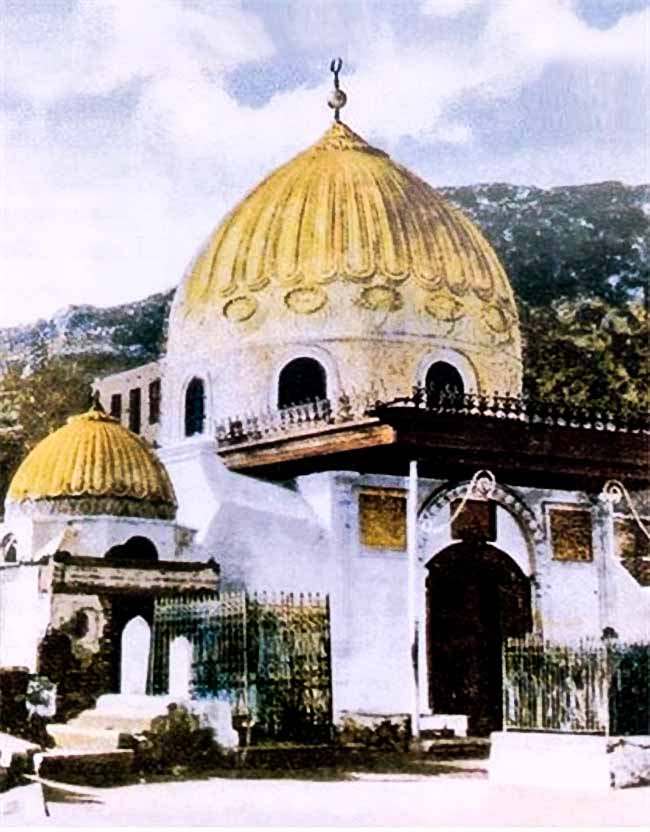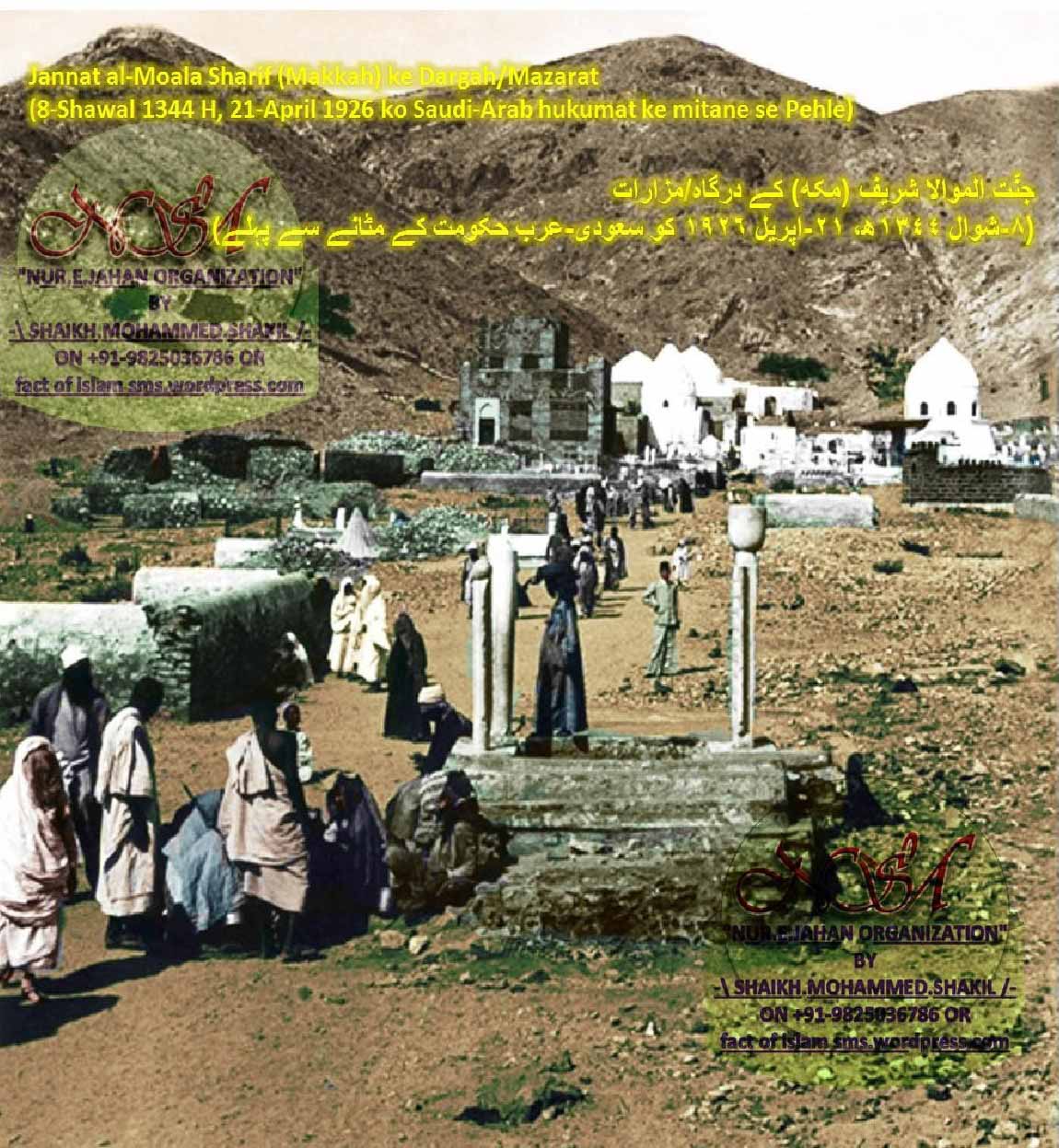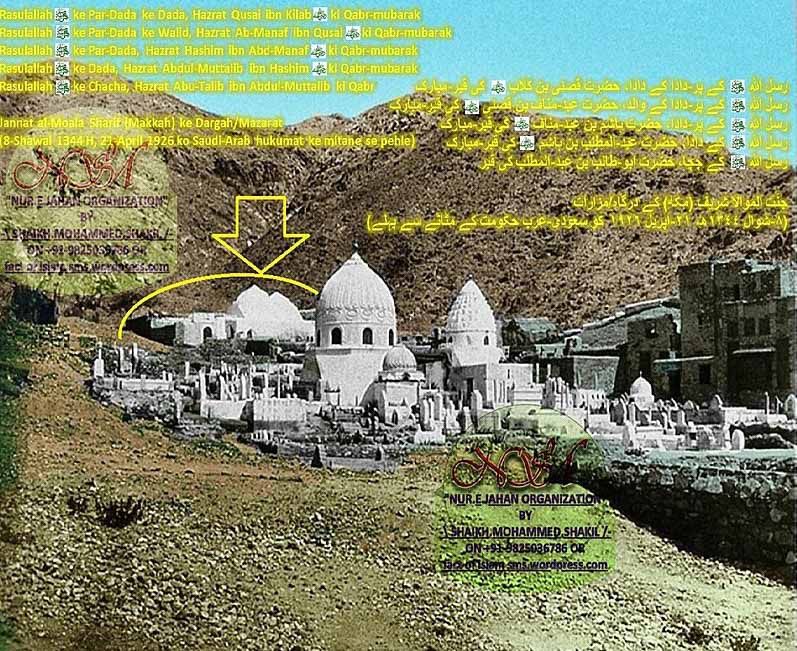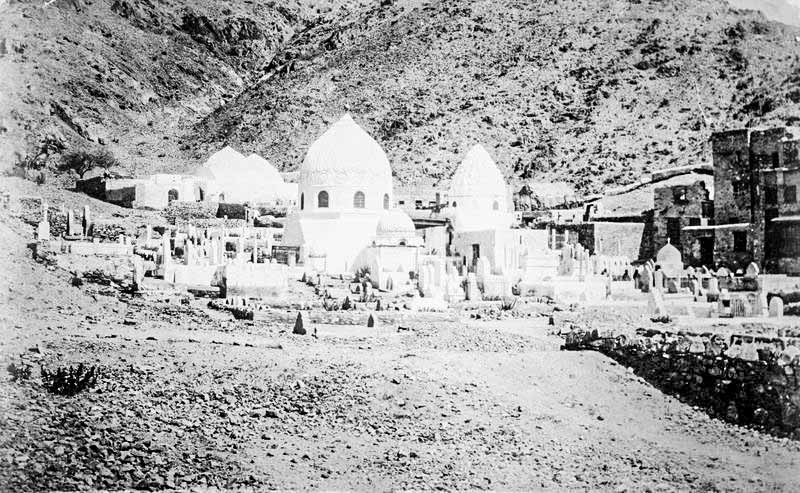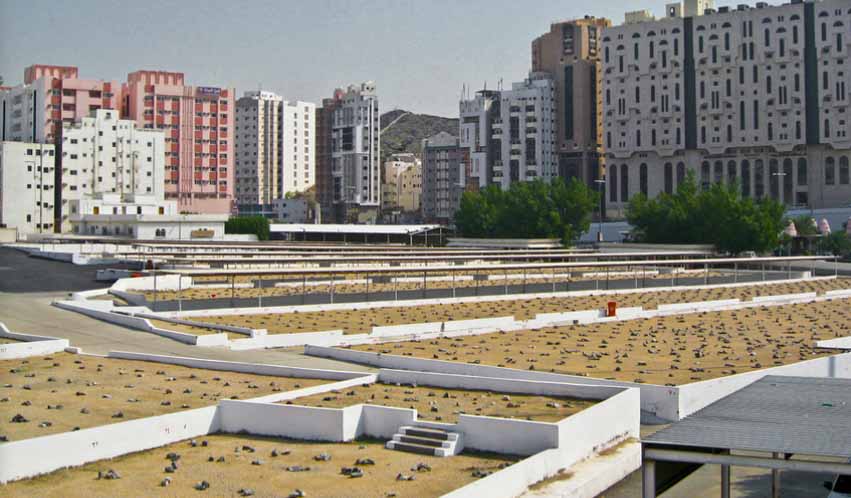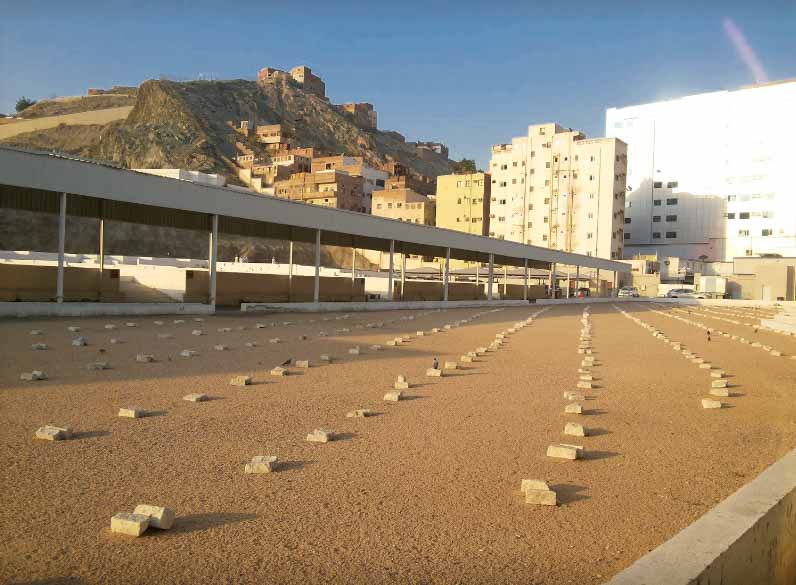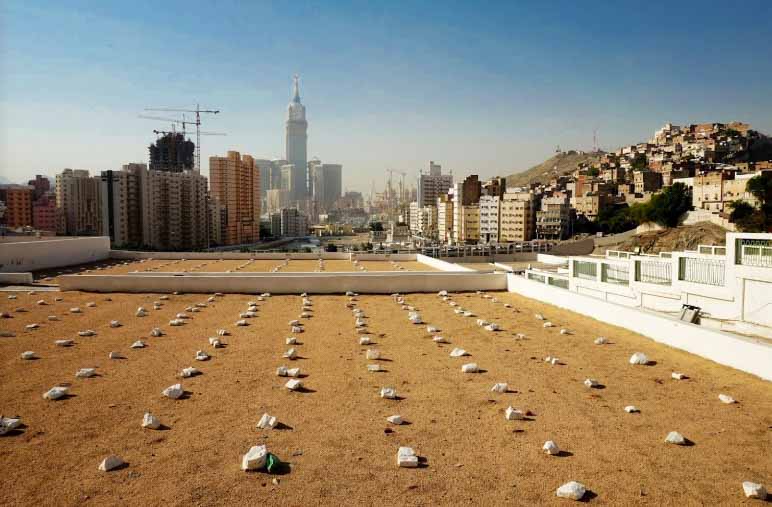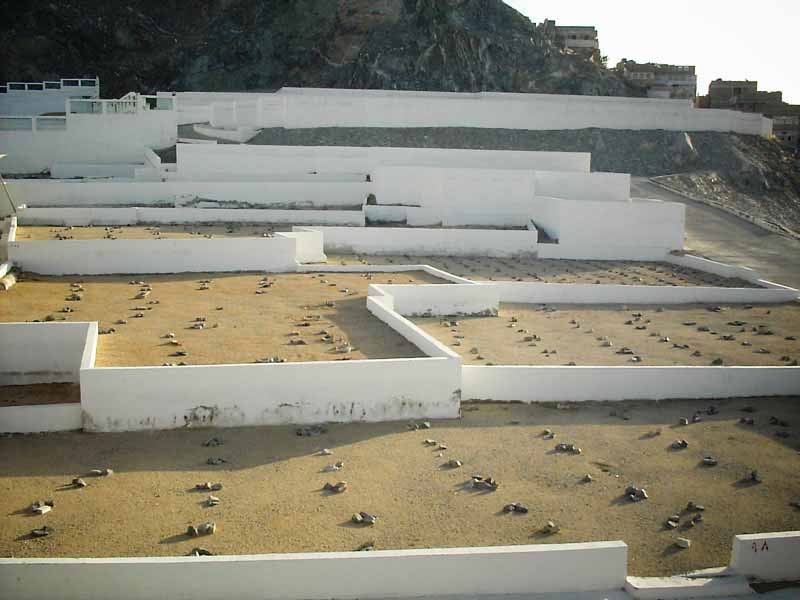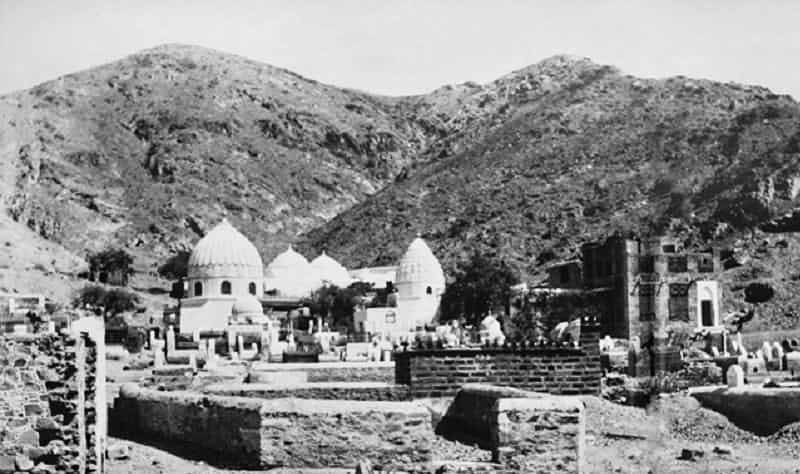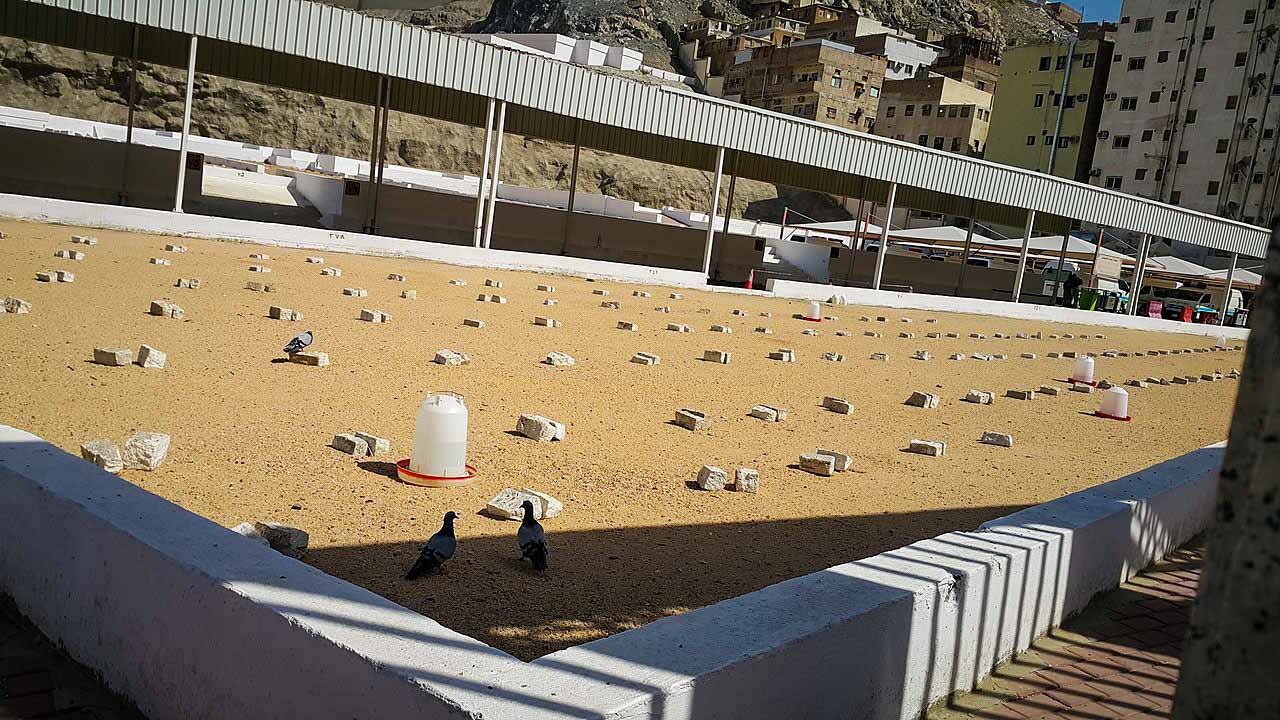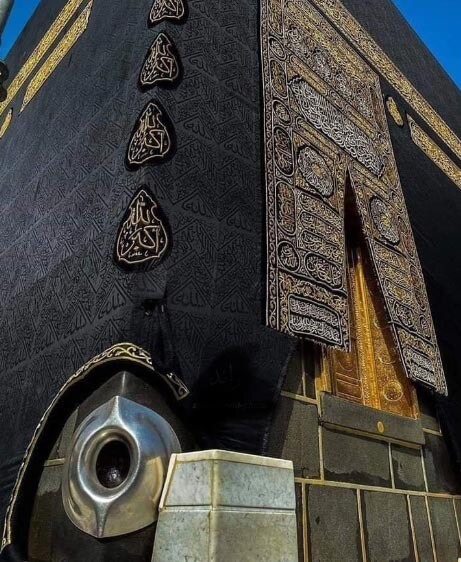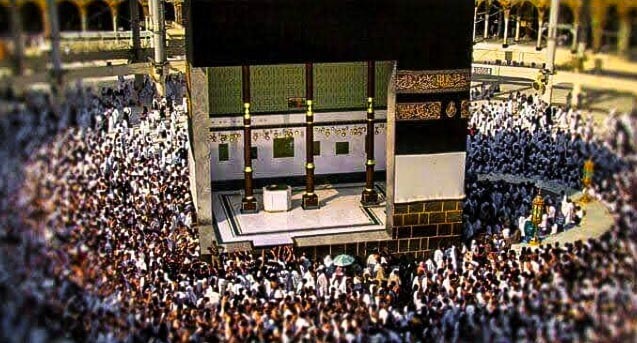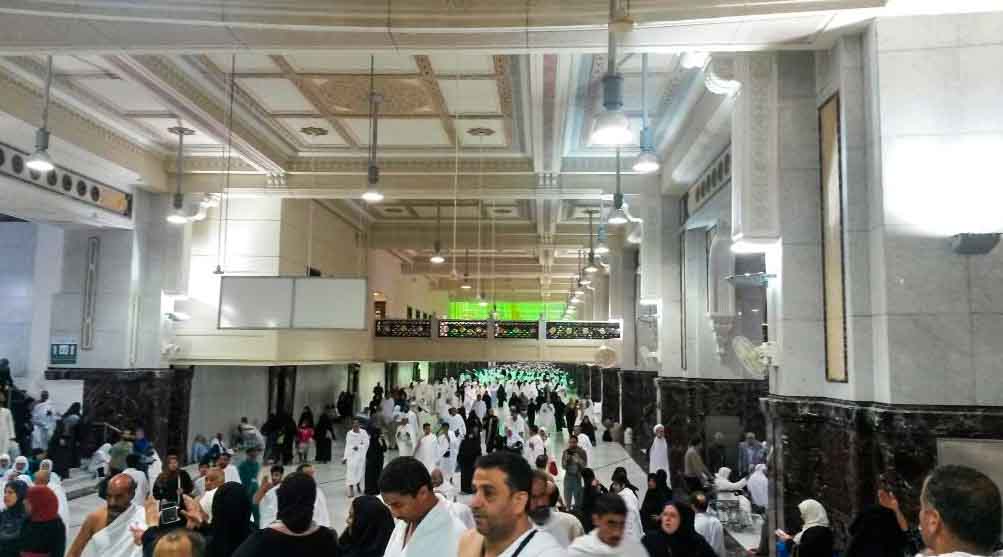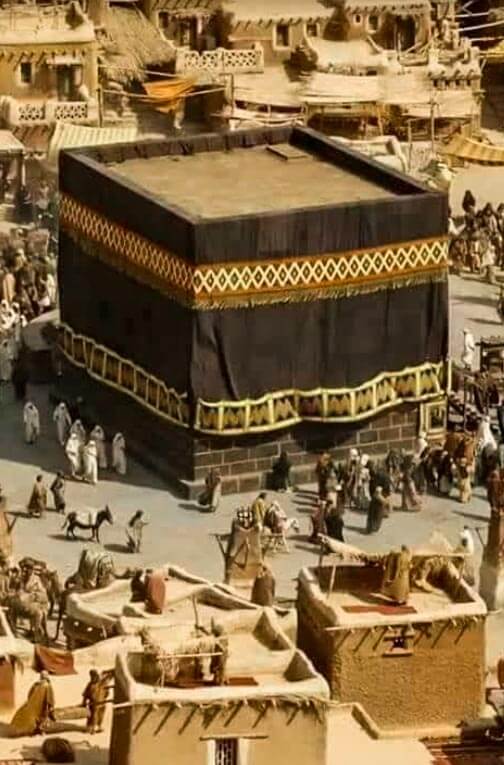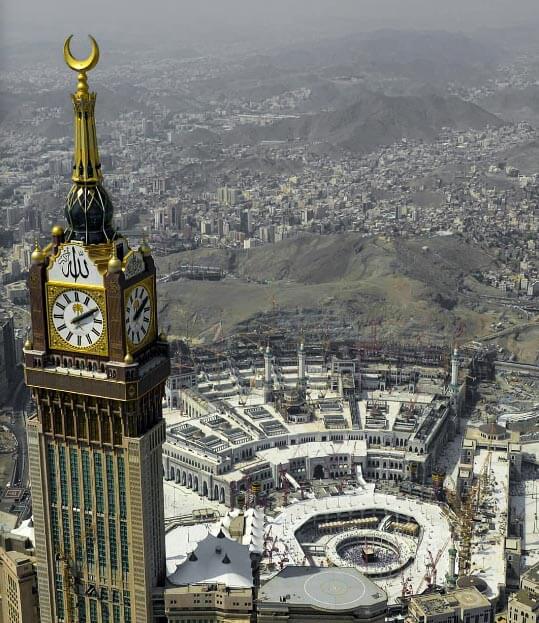Mecca Sharif, Saudi Arabia
Coordinates: 21.434700, 39.828700
Destruction of Jannal al-Mualla Cemetery
Many of Hz. Prophet Muhammad’s ﷺ relatives were buried in this cemetery before his Hegira in 622. Many domes and structures have been built or rebuilt over known graves over the years. Tombs in this cemetery were demolished in 1925, the same year that the Jannat al-Baqi’ cemetery in Medina was demolished by Saudi King, Ibn Saud. This happened despite protests by the international Islamic community.
Some Shiites continue to mourn the day the House of Saud demolished shrines in Al-Baqi, which has been named Yaum-e Gham or “Day of Sorrow”, and protest the Saudi government’s demolition of these shrines.
The destruction of heritage sites associated with early Islam is an ongoing phenomenon that has occurred mainly in the Hejaz region of western Saudi Arabia, particularly around the two holiest cities of Islam, Mecca and Medina.
The demolition has focused on mosques, burial sites, homes and historical locations associated with the Islamic prophet Hz. Muhammad ﷺ, his companions, and many of the founding personalities of early Islamic history by the Saudi government.
A cohesive political structure based on the Majlis al-Shura (consultative council) system had been in place for centuries. A central administrative body managed an annual budget which allocated expenditure on secondary schools, military and police forces.
Similarly, the religious fabric of the Najd and the Hejaz were vastly different.
Traditional Hejazi cultural customs and rituals were almost entirely religious in nature. Celebrations honouring Prophet Muhammad ﷺ, his family and companions, reverence of deceased saints, visitation of shrines, tombs and holy sites connected with any of these were among the customs indigenous to sunni Islam worldwide.
As administrative authority of the Hejaz passed into the hands of Najdi Wahabi Muslims from the interior, the Wahabi Ulama viewed local religious practices as unfounded superstition superseding codified religious sanction that was considered a total corruption of religion and the spreading of heresy. What followed was a removal of the physical infrastructure, tombs, mausoleums, mosques and sites associated with the family and companions of Prophet Muhammad’s ﷺ
The rapid influx of capitalist investment in Mecca and Medina leads many to believe that money and economic growth are the ultimate reason for Saudi authorities. Critics argue that this monetary focus works with Wahhabi state policy that imposes a massive cultural and social deletion within the Holy Cities, erasing any elements that encourage practices counter to the Wahhabi creed.
According to The Independent, the House of Mawalid where Prophet Muhammad’s ﷺ is said to have been born is about to be replaced by a huge royal palace, as a part of a multibillion-pound construction project in Mecca which has resulted in the destruction of hundreds of historic monuments.
The Saudis are turning Diriyah, the domain of Muhammad ibn Abd al-Wahhab, into a major tourist attraction.
Destroyed sites
Below is an incomplete list of destroyed sites:
Mecca Sharif
Jannat al-Mu’alla, the ancient cemetery at Mecca.
Grave of the father of Hz. Prophet Muhammad ﷺ.
The house of Mawlid where Prophet Muhammad’s ﷺ is believed to have been born in 570. Originally turned into a library, it now lies under a rundown building which was built 70 years ago as a compromise after Wahhabi clerics called for it to be demolished.
The house of Bibi Khadija رضي الله عنها, Hz. Prophet Muhammad’s ﷺ first wife. Muslims believe he received some of the first revelations there. It was also where his children Bibi Zainab bint Muhammad رضي الله عنها, Bibi Ruqayyah bint Muhammad رضي الله عنها, Bibi Umm Kulthum bint Muhammad رضي الله عنها, Bibi Fatimah رضي الله عنها, Hz. Qasim رضي الله عنه and Hz. Abd-Allah ibn Muhammad رضي الله عنه were born. After it was rediscovered during the Haram extensions in 1989, it was covered over and it was made into a library.
Mahhalla complex of Banu Hashim, in Mecca.
Dome which served as a canopy over the Well of Zamzam.
A Hilton hotel stands on the site of the house of Islam’s first caliph, Hz. Abu Bakr رضي الله عنه.
Dar Al-Arqam, the first Islamic school where Prophet Muhammad ﷺ taught. It now lies under the extension of the Masjid Al-Haram of Mecca.
Other Sites
Tomb of Bibi Hawwa رضي الله عنها in Jeddah, sealed with concrete in 1975.


